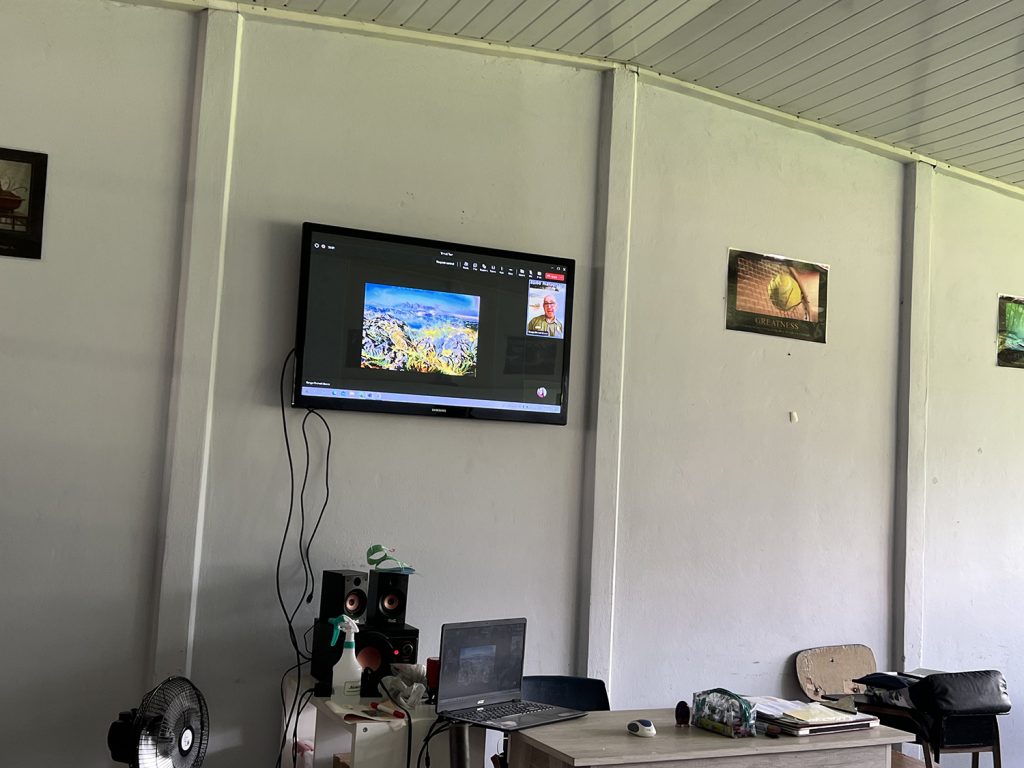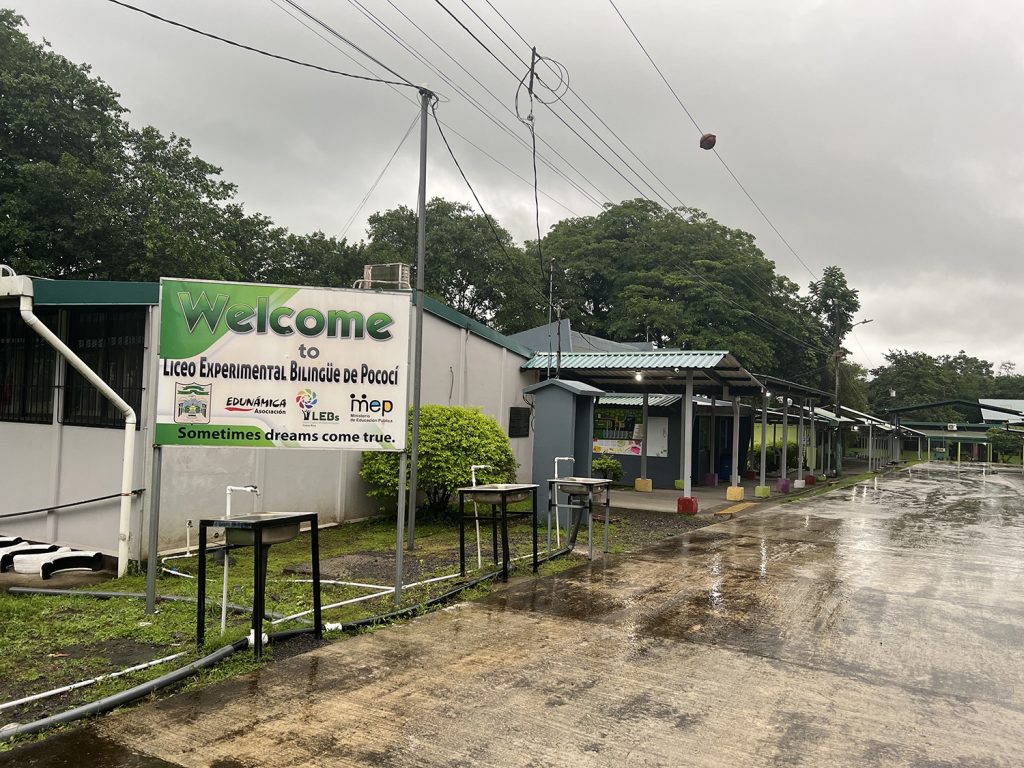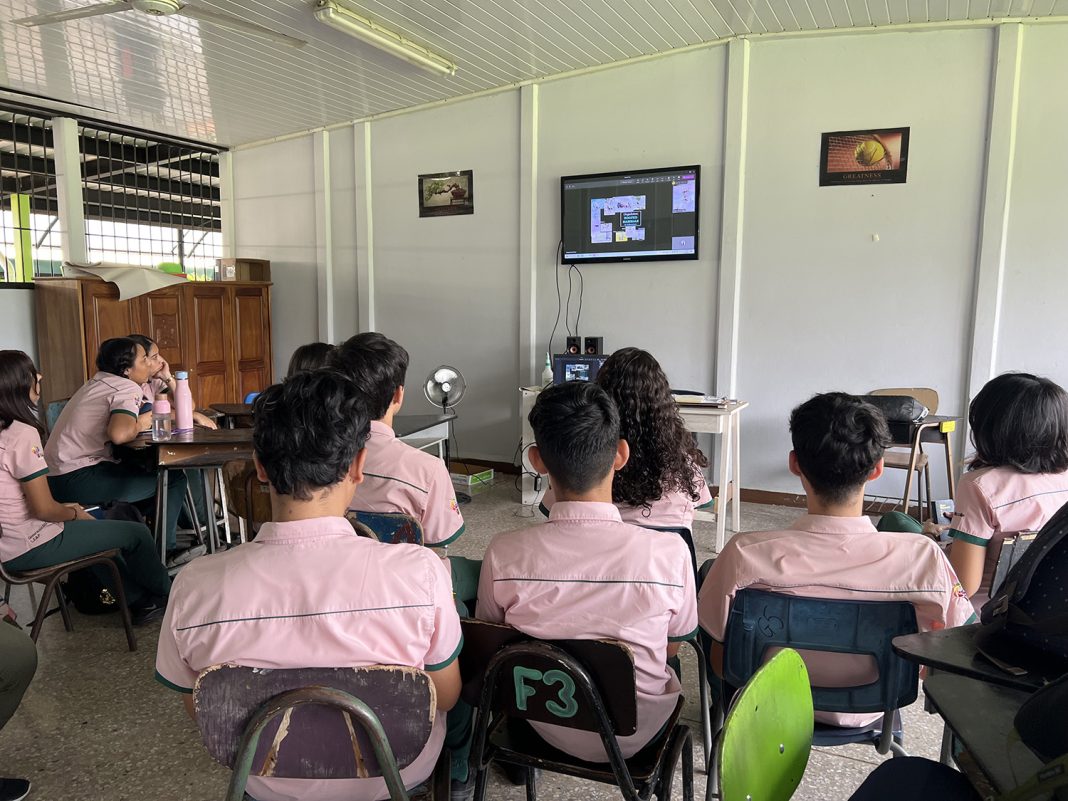So how did I come to take my 10th and 11th grade students in Pococí, Limón, on a tour of Yellowstone National Park?
The idea came up after a browsing session on Facebook. During the COVID-19 pandemic lockdown, I tried to take advantage of the time to learn more and transmit that knowledge to my students—so I started to follow various pages related to technology and education. One day earlier this year, I saw a post stating that it was possible to schedule a tour of the park simply by submitting a request through the national park platform.
I submitted a request and waited: they accepted it. My students were so excited when they realized the event was on the calendar, and that they would be able to ask questions. Something I will never forget was when my students inquired who the presentation was intended for: they assumed it was a presentation for some other group of people and that we had just joined in. They finally realized the ranger was talking only to us, and that I had scheduled the meeting directly with the Yellowstone ranger.

This made them feel unique, excited and proud. A tour of Yellowstone, just for them! At the end, they interacted with the ranger who politely answered their questions.
My students had felt frustrated after the pandemic lockdown and, before that, the 2018 teachers’ strike. Because they’d missed so many lessons, they didn’t believe they were capable of interacting with a native speaker in such a complex environment. Through the tour, they were surprised to see how much progress they have actually made.
This is one of many ways that I’ve brought various media into my classroom to bring English to life. Yellowstone wasn’t the only place my students visited: we also took a virtual Harry Potter Universal Studios Field Trip (learn more here), where students could watch authentic material and listen to people visiting the attractions while learning about the usage of English in context using Google Slides and Bitmojis.

In 2020, Edutech de Centroamerica offered an option to obtain free access to a platform for learning English that’s widely used in some private institutions. I requested credentials for my students, who were 7th graders at the time. They could activate it and use it even if they didn’t have full time internet access, and their progress was updated once the platform hit a wifi connection.
I created a blog so my students have access to the material, audios, videos and important documents such as presentations; prepare audio material so that they can immerse themselves in a listening experience; and had my 10th graders create a newspaper article together as a cooperative project, using the school’s computers. All of this takes more preparation time on my end, but it’s worth it.
I also continue to follow some teaching Facebook pages that I discovered during the pandemic. They share multiple ideas, material, and resources. Our students tend to use social media on a daily basis—probably many hours per day. However, they don’t know how to use electronic devices to develop technology literacy. As teachers, we should get involved with technology and become familiar with it. We should use it in our favor and teach our students how to work and learn through it. In this way they can become more proficient and prepared for the future that awaits them.
These ideas may sound time-consuming—but they help us move towards our goal of getting our students involved in the target language. Beyond that, they help us prepare them as well as we can to face today’s reality. We have to remember that knowledge by itself is not enough. Our students should become individuals capable of solving problems, using creativity and technology to function in a world that’s more and more demanding every day.
Our role is to guide and orient them by preparing them for the path ahead.








I’m so proud of you Vivi! I have always amazed how creative you are when you teach your students. Keep in that way!